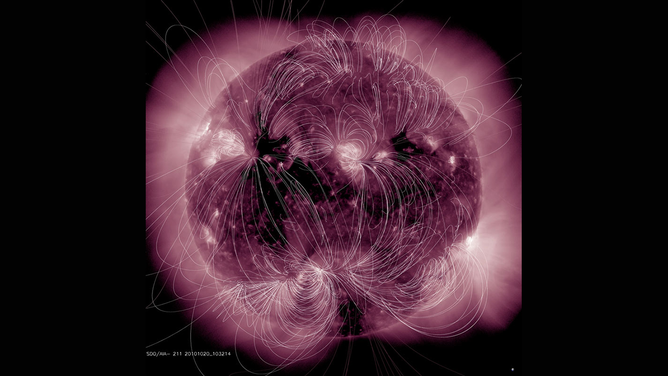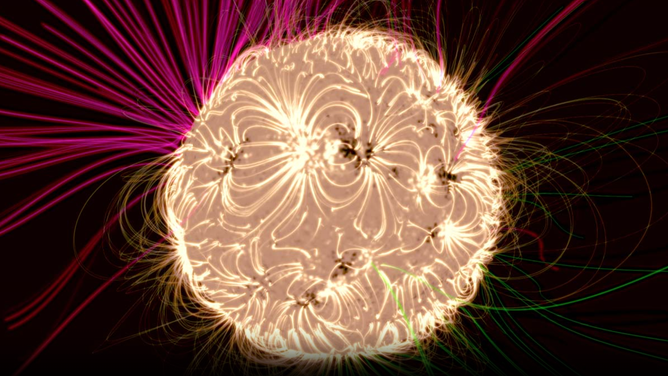Origin of Sun’s elusive magnetic field could be just below the surface, study finds
These new findings come just in time for the space weather Earth has been experiencing this year, including the most active aurora lights on Earth in decades. Knowing where the solar dynamo starts can help improve space weather forecasts on Earth.
Northern Lights could return to southern US during another 'severe and extreme' geomagnetic solar storm Sunday
FILE VIDEO: The Space Weather Prediction Center says the Northern Lights could put on a show for millions of people as far south as Alabama and Northern California on Sunday night after several coronal mass ejections reach Earth earlier in the day.
One of the Sun’s most powerful features is the swirling, dancing loops of its magnetic field, which reach far beyond the surface of the Sun, influencing the space weather responsible for the colorful aurora lights on Earth.
Space scientists have not been able to precisely determine where the magnetic field, also known as the solar dynamo, originates. Previous theories suggest these oscillations are deep within the Sun’s interior; however, most recently, researchers found these rotations could be much closer to the surface.

The illustration maps the magnetic field lines emanating from the Sun and their interactions superimposed on an extreme ultraviolet image taken by NASA's SDO spacecraft in 2010.
(NASA)
A study published in the journal Nature suggests that the magnetic field’s origin could be within the outer 5-10% of the Sun.
These new findings come just in time for the space weather Earth has been experiencing this year, including the most active aurora lights on Earth in decades. Pinpointing where the solar dynamo comes from can help improve space weather forecasting.
MESMERIZING TIME-LAPSE VIDEOS SHOW NORTHERN LIGHTS DAZZLING SKYGAZERS AROUND THE WORLD
Using mathematical modeling with a NASA supercomputer, the research team found that solar winds about 20,000 feet below the surface create magnetic fields through a process called magnetorotational instability.

A simulation of the Sun's magnetic field changing over several years.
(NASA)
"The solar dynamo is the oldest unsolved problem in theoretical physics; it's absolutely fascinating. We know the dynamo acts like a giant clock with many complex interacting parts, but we don't know all the pieces or how they fit together," said study author Geoffrey Vasil of the University of Edinburgh’s School of Mathematics.
The Sun’s magnetic system drives the 11-year solar cycle when the magnetic field reverses. During this period, the Sun starts with few or no sunspots and then peaks at solar maximum with the most sunspots in this period. Sunspot observations date back to 1612, when Galileo Galilei documented the solar surface with early telescopes. Eventually, scientists determined these sunspots appear and then vanish near the equator every 11 years.
WHAT ARE THE 5 CATEGORIES THAT MEASURE GEOMAGNETIC STORMS?
This year, the Sun is approaching solar maximum, and these sunspot regions are producing powerful X-class flares and coronal mass ejections responsible for radio blackouts and aurora lights on Earth.
Knowing where the solar dynamo starts can help improve space weather forecasts on Earth.
